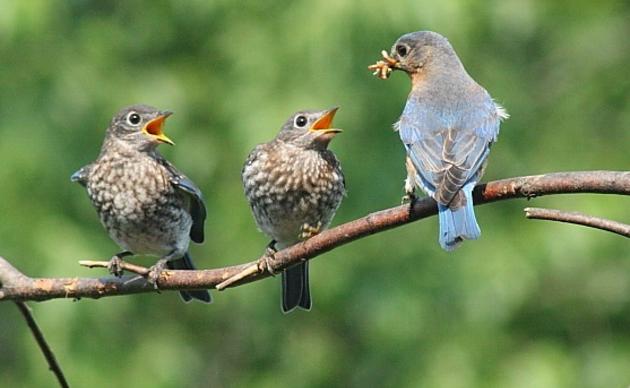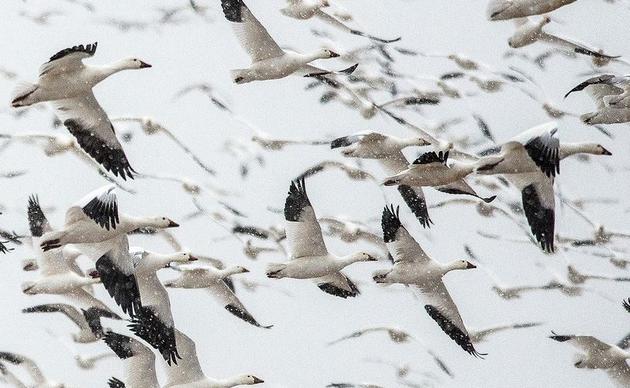Originally posted in the Ithaca Times by Clara MacCarold
January 9, 2015
The fields around Long Point Winery appear desolate this time of year, but short-eared owls have wandered south from Canada to hunt for voles and mice in just this kind of habitat. “Even if I'm not getting pictures, they're just so fun to watch,” said Sarah Blodgett, an Ithaca-based photographer who regularly stops by Long Point to look for the owls from November to March. “They generally come out around early afternoon, late evening to hunt.”
Short-eared owls range widely across several continents and oceanic islands, but their populations are in trouble. “Their habitat has declined significantly,” said Christopher Lajewski, director of the Montezuma Audubon Center, “and their numbers are way down.” They are listed as endangered in New York. Along with another grassland species, the northern harrier, these owls are the focus of an ongoing statewide survey of winter raptors begun by the New York State Department of Environmental Conservation in 2009.
Most troubling is an observed drop in nesting short-eared owls throughout New York over the last few decades. Nesting owls must be pickier than wintering owls because they are foraging for their young as well as themselves. “It seems that the winter population is still doing fairly well,” said Michael Palermo, a wildlife technician at the DEC, although he cautioned that he was speaking relatively.
Large swaths of New York forests were chopped down in the nineteenth and twentieth centuries, creating grassland habitat, but the process of reforestation has made former fields inhospitable to grassland species. So is the drop in grassland species just a natural process as the state reverts to its pre-settlement condition? Not exactly. “Back then,” explained Palermo, “there were natural interruptions to the forest where there were grasslands and marshes,” with many open areas maintained by the burning practices of Native Americans. Now, many disruptions to the forest cover are developments or crop fields.
As owls go, they are relatively easy to find. “They are definitely the most diurnal species of owl in the area,” said Palermo, and they can even be seen in the middle of a cloudy day. They might be perched on a hay bale, on a roof, or on a post and, if you position yourself in the right place at the right time, they might fly over your head.
“One of the best places to see short-eared owls in the winter here in New York is in the Montezuma Wetland Complex,” said Christopher Lajewski, director of the Montezuma Audubon Center. The complex includes 50,000 acres of federal, state, and private land, with a majority managed for conservation.
Weekly winter raptor surveys have been held at Montezuma since 2010, following a virtually identical protocol as the winter raptor surveys coordinated by the DEC. Last week 16 short-eared owls, a record for the season, were seen throughout the complex, according to Lajewski. Surveyors watch a location from the half hour before sunset until the half hour after sunset, an hour in total, and record detailed observations of species, locations, and behavior. “We’re keeping track of not only the areas that short-eared owls are found, but also the habitat,” said Lajewski.
More study is needed before researchers and managers can make definitive statements about the owls' habitat use, but Lajewski thought they seem to like best emergent marshes and managed grasslands. Management not only keeps out the trees, but also invasive shrubs such as honeysuckle and multiflora rose. “One of the biggest threats to these habitats is invasive species,” Lajewski said. Managers and volunteers at the Montezuma Wetlands Complex spend hundreds of hours controlling invasives and planting native species.
Since 2008, 22 landowners throughout the state have managed their own grasslands through the New York State Landowner Incentive Program. The DEC has been monitoring these sites, although it is too soon to determine the program's effect on short-eared owl populations.
Agricultural land can be useful for the owls as long as it supports a population of small mammals. Lajewski said the data tentatively suggest owls choose fallow fields, which were farmed in the last three years but not the most recent summer, over other agricultural fields or wet meadows.
Palermo said there was also a need for volunteers to independently investigate new sites that either once had short-eared owls or might be good habitat for owls. DEC-run winter raptor surveys are held every other week, although days of the week vary by area. In Trumansburg, surveyors will meet next on Thursday, Jan. 15. Contact Palermo at 585-226-5464 to become involved.



